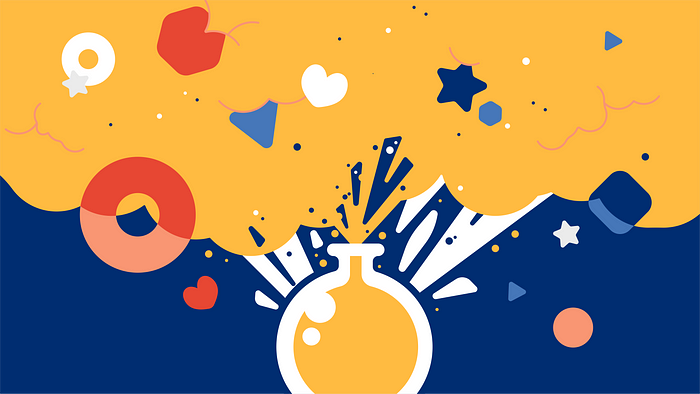
Adopting a Lifelong Learning Mindset Through Digital Transformation at Disney
In 2018, The Walt Disney Company launched a new business segment, Direct-to-Consumer & International, as part of a major reorganization. The new business segment consisted of Disney’s global streaming and media services, including Disney+, Hulu, and ESPN+. Far from an overnight transformation, the new business segment was preceded by six years of experimentation by an internal innovation team called Disney Interactive Labs. For most of those six years, I was Head of Design at Labs and had an insider’s chance to lead and participate in many of those experiments.
Fast-forwarding to the present, I now have a fresh perspective on Disney’s initiative, viewing it through the lens of our work at IDEO, a global design firm where we create positive impact through design and creativity. As part of IDEO’s commitment to the power of design thinking and complex problem-solving, we create Learning Programs to help leaders, teams, and organizations navigate change through design, creativity, and play. Here are five key takeaways that can help leaders navigate change and might be helpful for you.

Key Takeaway #1: Large-scale transformation starts with small experiments
This might seem obvious, but part of the challenge with change is that it can feel overwhelming — even before getting started. However, it needn’t be that way. While it took six years to substantially change the broader organization at Disney, it only took six months to build and launch the first product through new ways of working.
Starting with small experiments allows leaders and teams to reduce risk and build confidence while prototyping new conditions. At Labs, we developed a beacon product — lighting the way toward our purpose and north star — and launched it publicly for guests to give feedback. We iterated based on feedback as we scaled our team, approach, and learnings.
“The one who moves a mountain begins carrying away small stones.”
— Confucius
Learn how Intercorp built and scaled an entire network of schools for the growing Peruvian middle class.
Key Takeaway #2: For change to be successful you will need bold leaders and empowered teams
People often ask whether transformation comes from the top of the organization or the bottom. To be truly successful, change requires both. Our transformation journey at Disney began with a bold leader setting a vision to address the emerging needs of consumers and mounting challenges for the company. This leader then empowered teams through inspiring questions to reframe challenges as opportunities for design.
Our multidisciplinary team at Labs was a unique blend of existing and new Disney employees. Existing employees who raise their hands bring organizational intelligence and brand loyalty from different parts of the company. New employees bring fresh perspectives and introduce new expertise, methods, and ideas.
Successful change requires both top-down and bottom-up support. Leaders must be willing to set a bold vision for the future and empower teams to execute that vision. At the same time, inspired individuals must be willing to challenge the status quo and push the edges of what is possible. As a leader, what is the vision you want to set for your team? What is a question that you could ask your team to inspire new ways of thinking, provoke alternative paths, and open the door for new value to be created?
Read how JR East empowered a team to design a human-centered digital wayfinding service and development platform.
Key Takeaway #3: Part of your transformation journey will be to develop new roles, metrics, and mindsets
Alongside the need to optimize current operations, leaders and teams must also develop new capabilities, new ways of measuring progress beyond short-term gains, and growth mindsets that cultivate creativity. Leaders must invest in upskilling and reskilling existing employees for new roles and competencies, and may need to hire for roles that support new offerings. All employees must embrace a culture of building stakeholder empathy, experimenting with possibilities, and adapting through learning.
At Labs, we trained and hired design researchers, UX designers, software engineers, data scientists, and product managers to develop new digital products, services, and platforms — all roles which were previously nascent or outsourced to external partners. New offerings were significantly different from past products, therefore demanded new metrics to enable the organization to monitor long-term progress.
Building a sustainable organization is no longer about optimizing for efficiencies but becoming adaptive and experimenting to create new value. Beyond basic business or operational performance, what other metrics could you use to think about your business’s health, resilience, and untapped potential?
Learn about resilience from global leaders, including how Mitsui & Co. approached talent acquisition as a strategic venture at Moon Creative Lab.
Key Takeaway #4: Success or failure will depend on the choices you make as a leader
In 2016, Disney made the difficult decision to wind down its games division, which was part of the struggling Interactive Media business segment. Instead, Disney shifted to a licensing model, partnering with top studios around the world to develop its games. Of course, that decision created challenges and put a strain on the organization. But as a result, Disney now has some of the world’s greatest talents developing its extremely successful games, without the risk of managing large, specialist teams.
Disney realized that it made sense to outsource game development and license its vast intellectual property — the characters, worlds, and stories from Disney, Pixar, Marvel, and Star Wars — while focusing internal efforts on building exceptional direct-to-consumer platforms and guest experiences.
Organizational transformation often determines new teams and partnerships. As a leader, what will you choose to own or outsource based on what makes sense for your stakeholders in the long term?
Watch how The J.M. Smucker Company embraced customer centricity to build an internal culture of innovation.
Key Takeaway #5: Change will take more time than you think
Like software, organizational transformation is never done. It is a continuous evolution of experimentation, iteration, learning, and unlearning. To succeed in the twenty-first century, every enterprise needs to be a learning organization.
By starting with small experiments, evolving your company culture to be more empathetic, curious, and creative, and being open to learning from mistakes along the way, progress will ultimately be positive. Over time, your organization will become a team of teams, collaborating across business units, and constantly adapting to meet the evolving needs of all stakeholders — employees, customers, communities, shareholders, and our shared planet.
Learn how design is driving Ford to reimagine what a car company can be.
At IDEO, our clients often approach us during the early stages of their transformation journey, when a bold leader, corporate strategy division, or aspiring team is assessing mounting challenges and evolving needs.
Through IDEO’s approach to design research, we can help discover latent or unmet needs and new insights that inspire new ways of thinking. Through sense-making and prototyping, we can help identify, explore, and experiment with new opportunities. Through collaboration and capability-building, we can help develop new habits, skill sets, and mindsets that cultivate a culture of lifelong learning. We can help our partners navigate change toward a sustainable future through empathy, curiosity, and creativity.
“Disneyland will never be completed. It will continue to grow as long as there is imagination left in the world.”
— Walt Disney
Walt Disney understood the nature of creativity, leading creative teams, and inspiring outcomes that create new value. He was a bold, visionary leader and a master at empowering people to achieve far beyond their job descriptions and expectations. The designers, artists, and engineers who built Disneyland weren’t experts at roller coasters. Instead, Walt painted a future vision of Disneyland and inspired people to shift from making animated films to creating authentic, memorable, remarkable Disney experiences.
Walt believed in the team and inspired them to believe in themselves — in turn, they created a brand unlike any other on earth beloved by guests and fans around the world.
This story was first published at IDEO.
